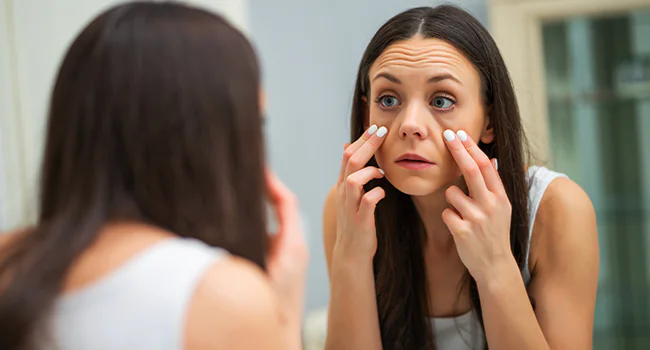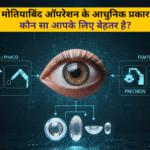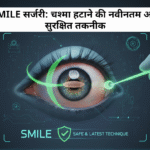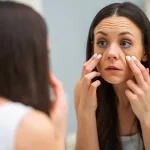Eye bags, the puffiness or swelling that occurs under the eyes, are a common cosmetic concern for people of all ages. They can make you appear tired, stressed, or older than you are. While mild puffiness is usually harmless, persistent under-eye bags may indicate an underlying issue or require targeted treatments.
What Are Eye Bags?
Eye bags refer to the swelling or puffiness under the lower eyelids. They occur when the tissues around the eyes, including some muscles, weaken and sag, causing fat and fluid to accumulate in the area. While eye bags are often a cosmetic issue, they may also result from lifestyle factors or health conditions.
Causes of Eye Bags
Understanding the causes of eye bags is the first step in addressing them effectively. Here are some of the most common factors:
Ageing
As you age, the muscles and tissues supporting your eyelids weaken. This allows fat and fluid to accumulate, leading to puffiness.
Genetics
A family history of under-eye bags can make you more prone to developing them, regardless of lifestyle habits.
Allergies and Sinus Issues
Inflammation and fluid retention caused by allergies or sinus infections often result in puffiness under the eyes.
Lack of Sleep
Poor sleep quality can cause fluid retention and lead to swelling in the delicate skin under the eyes.
Lifestyle Factors
Smoking, excessive alcohol consumption, and a high-sodium diet can contribute to fluid retention and worsen eye bags.
Health Conditions
In rare cases, persistent under eye bags may indicate kidney problems, thyroid disorders, or other medical conditions.
How to Remove Eye Bags Permanently at Home?
For those wondering how to remove eye bags permanently at home, there are various treatment options ranging from at-home remedies to professional medical procedures.
Lifestyle Changes
Adopting healthy habits can significantly reduce puffiness under the eyes:
- Get Enough Sleep: Aim for 7-9 hours of quality sleep per night.
- Stay Hydrated: Drink plenty of water to reduce fluid retention.
- Avoid Excess Salt: A low-sodium diet prevents puffiness caused by water retention.
Home Remedies
- Cold Compress: A cold compress can constrict blood vessels and reduce swelling.
- Cucumber Slices: The natural cooling effect of cucumbers can soothe puffiness.
- Tea Bags: Caffeinated tea bags help shrink blood vessels and reduce inflammation.
- Elevate Your Head: Sleeping with your head slightly elevated can prevent fluid from pooling under your eyes.
Also Read: Eye Care Tips for Working Professionals
Treatment for Eye Bags
When home remedies aren’t enough, professional treatments offer effective solutions for eye bags:
Topical Treatments
Eye creams containing ingredients like retinol, hyaluronic acid, or caffeine can help reduce puffiness and improve skin elasticity.
Dermal Fillers
Injectable fillers can smooth the under-eye area by plumping up hollow regions and reducing the appearance of under-eye bags.
Chemical Peels
Chemical peels improve the skin’s texture and reduce pigmentation around the eyes, making bags less noticeable.
Laser Therapy
Laser treatments tighten the skin and promote collagen production, helping to reduce sagging and puffiness.
Surgical Options
For those seeking a permanent solution, blepharoplasty (eyelid surgery) is popular. This involves removing or repositioning excess fat and skin to achieve a smoother, more youthful appearance.
Blepharoplasty, or eyelid surgery, is the most effective option for eye bags. Here’s what you need to know about this procedure:
- Process: An incision is made along the natural crease of the lower eyelid to remove or reposition excess fat and skin.
- Recovery: Patients typically recover within 1-2 weeks, with minimal scarring.
- Results: The effects of blepharoplasty are long-lasting, offering a permanent improvement in the appearance of eye bags.
How to Prevent Eye Bags?
Preventing eye bags involves proactive measures:
- Manage Allergies: Use antihistamines or prescribed medications to control allergy-related puffiness.
- Protect Your Skin: Wear sunscreen to prevent skin damage and thinning around the eyes.
- Limit Screen Time: Reduce strain on your eyes by taking regular breaks during screen use.
For persistent or severe under eye bags, consulting a specialist is essential. At Centre for Sight, our experts offer tailored treatments to address both cosmetic and medical concerns associated with eye bags. Whether you’re considering non-invasive options or surgical solutions, we provide comprehensive care to help you achieve your desired results.
Take the first step toward healthier, more beautiful eyes Book an Appointment with Centre for Sight in India!
Frequently Asked Questions
What causes eye bags?
Eye bags are mainly caused by aging, genetics, fluid retention, and lack of sleep. These factors lead to fat and fluid accumulation under the eyes. Adequate sleep and cold compresses can help reduce their appearance.
How do I get rid of my Eyebags?
To reduce eye bags, get enough sleep, use cold compresses, and stay hydrated. Lower your salt intake and sleep with your head elevated to prevent fluid buildup.
Does lack of sleep cause eye bags?
Yes, lack of sleep can cause eye bags. Insufficient rest leads to fluid retention and poor circulation, causing puffiness and dark circles under the eyes.
Why do we get eye bags when tired?
When tired, fluid retention and poor blood circulation cause puffiness and dark circles under the eyes. Additionally, lack of sleep weakens the skin, making eye bags more prominent.
Are Eyebags permanent?
Eye bags are typically not permanent and can often be improved with adequate sleep, hydration, and lifestyle adjustments. In some cases, medical treatments such as fillers or surgery may be considered for a more significant reduction.
How to remove eye bags permanently?
Eye bags can be permanently reduced through blepharoplasty (eyelid surgery) or non-surgical treatments such as dermal fillers. Adjustments like getting enough sleep and staying hydrated can also help diminish their appearance.
At what age do eye bags appear?
Eye bags can appear in adulthood, typically becoming more noticeable around the 30s and 40s, influenced by genetics and lifestyle factors.
Are eyebags removable?
Yes, eye bags can be reduced through treatments like surgery, fillers, or by improving sleep and hydration.
Are puffy eyes and eye bags the same thing?
Puffy eyes and eye bags are related but not identical. Puffy eyes typically refer to swollen eyelids caused by allergies or fatigue, while eye bags specifically involve the puffiness beneath the eyes due to factors like aging or genetics.
Should I see a doctor about my eye bags?
If your eye bags are bothersome or don’t improve with lifestyle changes, it’s advisable to consult a doctor or dermatologist for personalized advice and treatment options.
What is the reason for eye bags?
Causes of eye bags include ageing, genetics, lack of sleep, allergies, and lifestyle factors such as smoking or a high-sodium diet.
What is the best treatment for eye bags?
The best treatment for eye bags depends on severity. Options range from topical creams and fillers to laser therapy and eyelid surgery for permanent results.
Will eye bags go away?
Mild eye bags caused by lifestyle factors may improve with rest and hydration. However, permanent under eye bags often require medical or surgical intervention.





